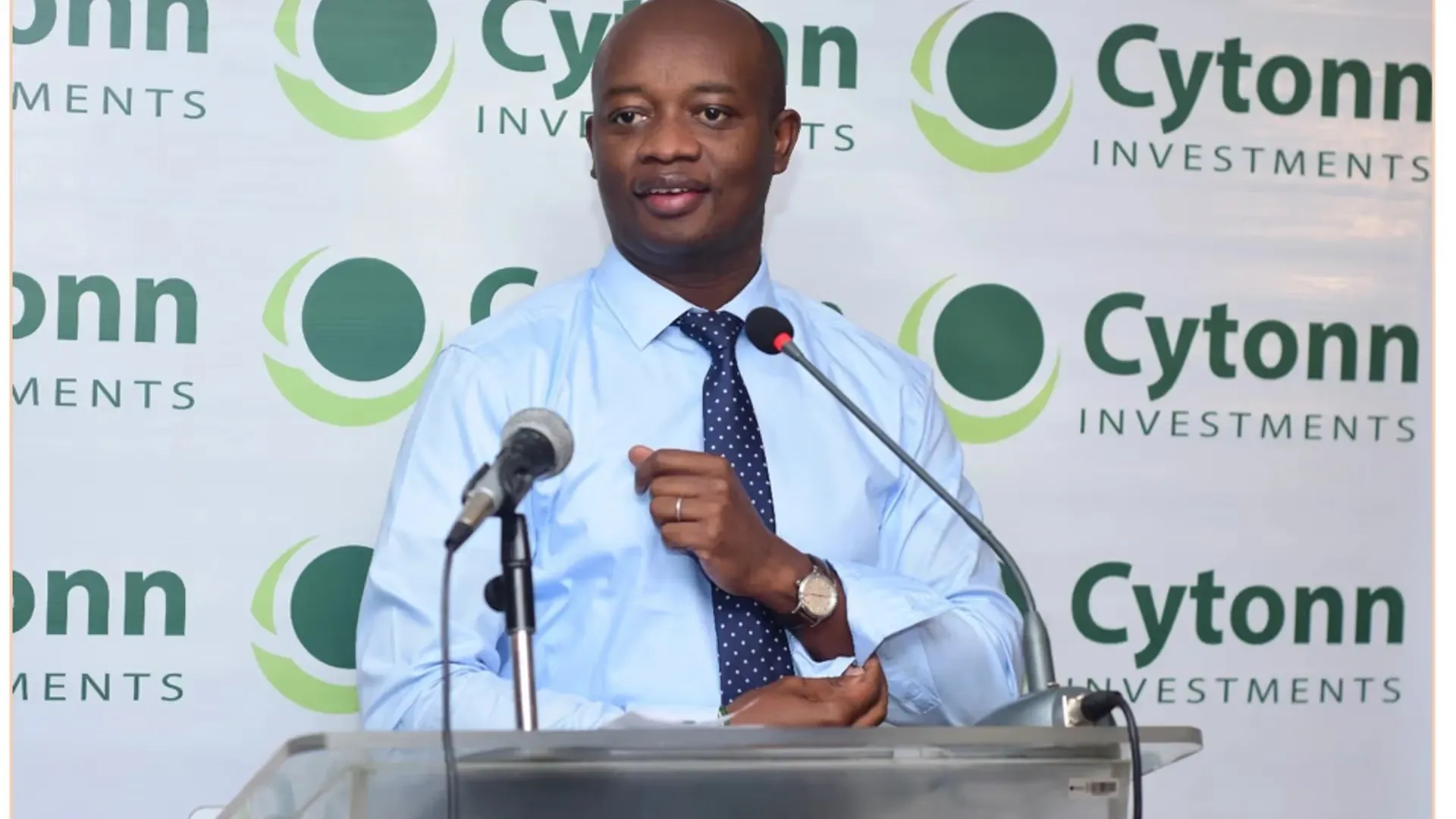The Court of Appeal has delivered a decisive blow to Cytonn Investments by dismissing all appeals connected to the collapsed Cytonn High Yields Solutions (CHYS) and Cytonn Project Notes (CPN) investment schemes, definitively confirming that more than KSh 11 billion collected from over 3,000 investors was channeled into unregulated investment vehicles that are now under court-supervised liquidation. This comprehensive judicial affirmation represents one of the most significant investor protection cases in Kenya’s financial markets history and establishes important precedents for regulatory oversight of alternative investment schemes.
Build the future you deserve. Get started with our top-tier Online courses: ACCA, HESI A2, ATI TEAS 7, HESI EXIT, NCLEX-RN, NCLEX-PN, and Financial Literacy. Let Serrari Ed guide your path to success. Enroll today.
Comprehensive Court Rulings Across Multiple Appeal Files
The sweeping rulings, contained in an extensive series of Court of Appeal files including E116, NAI E923, E091–E094, E927–E934, E032 of 2025, and E102–E105, collectively upheld the High Court’s earlier findings that investor funds were systematically channeled into Cytonn-controlled Special Purpose Vehicles (SPVs) without adequate security mechanisms, proper corporate governance structures, or mandatory regulatory oversight from the Capital Markets Authority (CMA).
The appellate judges unanimously held that the numerous SPVs established by Cytonn were not genuinely independent legal entities operating at arm’s length from the parent company, but rather were corporate structures that remained effectively operated, controlled, and funded by Cytonn Investment Management PLC and its principal promoters. This finding undermined Cytonn’s central defense argument that the SPVs constituted separate legal personalities with independent decision-making authority and distinct liability profiles.
The Court of Appeal specifically addressed and clarified a controversial phrase from the High Court judgment that had become a focal point of the appeals. The appellate judges reiterated that when the High Court described Cytonn’s corporate structure as being “akin to fraud,” this characterization did not constitute a formal legal finding or determination of criminal fraud requiring proof beyond reasonable doubt. Instead, the Court of Appeal explained, the phrase reflected the High Court’s assessment of the documented pattern of unsecured inter-company lending, systematic commingling of investor funds across different investment products, and material undisclosed conflicts of interest that permeated the entire corporate structure—all of which were extensively documented in the voluminous court record spanning thousands of pages.
This clarification carries significant legal implications, as it allows the civil liquidation proceedings to continue unimpeded while distinguishing between civil asset recovery and any potential criminal prosecutions that regulatory or law enforcement authorities might pursue separately under different evidentiary standards.
Parliamentary Investigation Exposes Regulatory Gaps
The judicial findings aligned closely with conclusions reached by Kenya’s legislative branch. A comprehensive investigative report released by the Parliamentary Finance Committee in 2023 documented that Cytonn operated CHYS, CPN, at least 49 separate SPVs, and approximately 20 related entities without any capital-markets supervision or registration with the appropriate regulatory authorities. This sprawling corporate empire, which grew rapidly between 2015 and 2020, exposed thousands of primarily retail investors—including teachers, civil servants, small business owners, and retirees—to unprotected losses when the schemes ultimately collapsed.
The Parliamentary report specifically criticized regulatory agencies for failing to detect and intervene earlier in Cytonn’s operations, despite warning signs that included aggressive marketing campaigns promising above-market returns, rapid asset growth that outpaced established financial institutions, and an increasingly complex corporate structure that obscured the ultimate use of investor funds. The report recommended strengthening the Capital Markets Authority’s supervisory powers, increasing penalties for operating unregistered investment schemes, and establishing clearer jurisdictional boundaries between different financial regulators to prevent future regulatory arbitrage.
Scale of Investor Exposure Remains Contested
While the courts have definitively confirmed investor exposure exceeding KSh 11 billion based on forensic accounting investigations and documentation submitted during the liquidation proceedings, broader estimates of the total investor losses place the figure substantially higher at between KSh 13 billion and KSh 14 billion. According to detailed investigative reporting by The Star newspaper, which extensively reviewed financial disclosures tied to RiverRun Estates Limited and related SPVs, the full extent of investor exposure may not be captured in the court-traced amounts.
This discrepancy between judicially confirmed losses and estimated total exposure arises from several factors. First, not all investors filed claims in the liquidation proceedings, either because they were unaware of their rights, missed filing deadlines, or had invested through intermediaries whose own records were incomplete or inaccessible. Second, the complex web of corporate entities, cross-guarantees, and layered investment products makes comprehensive forensic tracing extraordinarily challenging, particularly where records were inadequately maintained or have since been lost or destroyed. Third, some investments may have been structured through informal arrangements or verbal commitments that left minimal documentary evidence.
The liquidator’s ongoing investigations continue to uncover additional investor claims and asset linkages, suggesting that the final accounting of losses may not be completed for several more years as the complex corporate structure is fully unwound and all creditor claims are validated and adjudicated.
Major Real Estate Projects Preserved Under Court Orders
The courts have affirmed comprehensive preservation and vesting orders that place all major Cytonn real estate development projects under the control and supervision of the Official Receiver, following extensive forensic investigations that definitively linked these properties to funds collected through the CHYS and CPN investment schemes. The affected properties represent some of Nairobi’s most prominent residential development projects and include:
RiverRun Estates (Ruiru): This flagship mixed-use development project, prominently marketed as Cytonn’s premier residential offering, was financed through more than KSh 831 million channeled directly from CHYS investor funds. A professional property valuation conducted by Regent Valuers International, which was formally submitted as evidence in the court record, established the property’s fair market value at KSh 2.113 billion under normal market conditions, with a distressed or forced-sale value estimated at KSh 1.585 billion. This substantial gap between market value and forced-sale value highlights the potential losses that investors may face if properties must be liquidated quickly rather than sold through orderly marketing processes.
Kilimani Apartments (CIP16): Following legal challenges, the Court of Appeal definitively ruled that Cytonn’s attempted re-entry and repossession of this property was unlawful and violated the court-ordered asset preservation regime. Full possession and control of the Kilimani development has been returned to the court-appointed liquidator, who will determine whether to complete construction for sale or liquidate the partially completed asset in its current condition.
The Alma (Ruaka): Forensic accounting investigations traced CHYS investor exposure to this luxury residential project at KSh 1.437 billion, making it one of the single largest concentrations of investor funds in Cytonn’s property portfolio. The substantial investor stake in The Alma means that its successful completion and sale will be critical to maximizing recoveries for CHYS investors.
CySuites and Wasini Apartments (Westlands): Court documents confirm that KSh 187 million in traced CHYS funds were deployed into these adjacent Westlands properties, both of which were marketed as premium serviced apartment developments targeting affluent young professionals and corporate housing tenants.
Additional Preserved Properties: The comprehensive court orders also cover Taraji Heights, The Ridge development, a substantial land parcel in Athi River designated for future residential development, the Mystic Plains/Newtown project, the Applewood/Miotoni residential scheme, and a 12.5 percent equity stake in Superior Homes Kenya Limited—a separate property development company in which Cytonn had acquired a minority shareholding using investor funds.
These property exposures and valuations are drawn directly from the Administrator’s Report that was formally filed in Insolvency Petition E063 of 2021 and subsequently reproduced in full within the voluminous appeal record bundles submitted to the Court of Appeal. Collectively, the documentation reveals that CHYS advanced approximately KSh 5.8 billion in unsecured loans to its network of project-specific SPVs without registering any legal charges over the properties as security and without implementing any meaningful protections for the underlying investor funds.
This absence of registered security interests has created a complex creditor hierarchy problem in the liquidation, as secured creditors such as SBM Bank Kenya who hold properly registered charges over specific properties will receive priority distribution of proceeds from those assets, potentially leaving insufficient value to compensate unsecured CHYS investors who funded significant portions of the same properties.
One decision can change your entire career. Take that step with our Online courses in ACCA, HESI A2, ATI TEAS 7, HESI EXIT, NCLEX-RN, NCLEX-PN, and Financial Literacy. Join Serrari Ed and start building your brighter future today.
Regulatory Warnings and Cytonn’s Response
The adverse judgment outcomes align closely with earlier public warnings issued by regulatory authorities. On June 17, 2021, the Capital Markets Authority publicly declared that both CHYS and CPN were unregulated investment products operating outside the statutory regulatory framework and announced that both schemes were under active criminal investigation by the specialized Capital Markets Fraud Investigation Unit. This public warning came after the CMA had conducted preliminary investigations into investor complaints and reviewed Cytonn’s corporate structure and product offerings.
In response to the CMA’s public declaration, Cytonn Investment Management issued its own press statement in which the company acknowledged that CHYS was indeed structured as a “private product” that operated outside the CMA’s regulatory oversight framework. This acknowledgment, while technically accurate regarding the regulatory classification, effectively confirmed that thousands of retail investors had placed their savings into an investment vehicle that lacked the investor protection mechanisms—including capital adequacy requirements, custody arrangements, disclosure obligations, and conduct-of-business rules—that regulated collective investment schemes must observe.
Cytonn’s characterization of CHYS as a “private” product was legally questionable given the scale of the scheme, the number of investors, and the public marketing campaigns employed. Typically, private investment arrangements involve sophisticated investors with direct negotiating relationships, substantial minimum investments, and limited numbers of participants. CHYS, by contrast, accepted investments from retail clients with minimal investment amounts and actively marketed to the general public through extensive advertising campaigns across multiple media channels.
The CMA’s regulatory authority over collective investment schemes is established under the Capital Markets Act and related regulations, which grant the authority broad powers to register, supervise, and intervene in schemes that pool investor funds for investment purposes. Legal experts have questioned why the CMA did not take earlier enforcement action against Cytonn despite the clear characteristics of a collective investment scheme operating without authorization.
Liquidation Process and Investor Recovery Prospects
The court-appointed liquidator is now expected to proceed systematically with comprehensive professional valuations of all preserved properties, implementation of enhanced security measures to prevent asset dissipation, and eventual strategic marketing and sale of the properties to maximize recovery amounts for investors. However, the recovery process faces several substantial challenges that will likely extend the timeline and potentially reduce the percentage recoveries that investors ultimately receive.
First, the creditor hierarchy established under Kenya’s Insolvency Act means that secured creditors such as SBM Bank Kenya, who hold properly registered charges over specific properties, retain absolute priority over the proceeds from those charged assets. Only after secured creditors have been fully satisfied from the properties securing their loans will any residual value become available for distribution to unsecured creditors, including CHYS investors. Given that secured lenders typically lend conservatively at 60-70% loan-to-value ratios and hold first-ranking charges, there is a significant risk that some properties may yield little or no recovery for unsecured investor creditors.
Second, several of the preserved properties remain in various stages of construction, requiring the liquidator to make complex decisions about whether to invest additional capital to complete construction (potentially increasing ultimate sale values but requiring cash outlays from limited available resources), to sell partially completed projects to developers willing to finish them, or to liquidate the assets in their current incomplete state (which typically results in substantial discounts to fair value).
Third, Kenya’s real estate market has experienced significant volatility in recent years, with oversupply in certain segments (particularly middle-income apartments in Nairobi’s suburbs) potentially affecting achievable sale prices. The liquidator must carefully time property sales to avoid market conditions that would depress values below the professionally assessed fair market values.
Fourth, legal challenges from various parties—including competing creditor claims, disputes over property titles, construction contractors seeking payment for work completed, and regulatory compliance issues—may delay the liquidation process significantly. Each legal challenge requires resolution through court proceedings, consuming time and depleting the liquidation estate’s resources through legal fees and administrative costs.
Broader Implications for Kenya’s Financial Sector
The Cytonn collapse and subsequent judicial affirmation of the findings carries profound implications for Kenya’s financial services sector, particularly for alternative investment schemes operating in the regulatory gaps between traditional banking supervision and capital markets oversight. The case has exposed critical weaknesses in Kenya’s financial regulatory architecture that policymakers and regulators must address to prevent similar future collapses.
First, the case demonstrates that regulatory arbitrage—where financial services firms structure products specifically to fall outside clear regulatory boundaries—remains possible in Kenya’s current framework. Cytonn’s characterization of CHYS as a “private” product allowed it to avoid CMA registration and oversight, despite the scheme’s clear characteristics as a public collective investment vehicle. Closing these regulatory gaps will require either expanding the definition of regulated activities or establishing clearer principles-based regulation that captures substance over form.
Second, the Cytonn experience highlights the risks of inadequate investor sophistication and due diligence. Many CHYS investors were attracted by advertised returns significantly above prevailing market rates for government securities and bank deposits, without adequately questioning the sources of these promised returns or understanding the risks involved. Enhanced investor education, clearer disclosure requirements, and potentially restrictions on marketing of high-risk investment products to retail investors deserve consideration.
Third, the case underscores the importance of strong corporate governance, independent oversight, and proper security structures for investment schemes. The court findings that SPVs were not truly independent and that investor funds were commingled without proper security mechanisms demonstrate the consequences of governance failures. Regulatory requirements for independent trustees, custody arrangements, and regular independent audits of investment schemes could prevent similar structural weaknesses.
Fourth, the significant delays between the initial collapse, regulatory intervention, court proceedings, and ultimate investor recovery highlight the need for more efficient insolvency and investor compensation mechanisms. Many affected investors have waited years for any recovery of their invested capital, causing severe financial hardship. Faster resolution mechanisms, possibly including an investor compensation fund similar to those operating in more developed financial markets, could provide more timely relief to affected investors.
Lessons for African Financial Markets
The Cytonn case resonates beyond Kenya’s borders, offering important lessons for financial regulation across African markets where similar alternative investment schemes have proliferated in recent years. Many African countries have experienced rapid growth in unregulated or lightly regulated investment schemes promising above-market returns, often targeting middle-class savers seeking alternatives to low bank deposit rates.
Regional financial regulators, including those operating under frameworks established by organizations like the East African Securities Regulatory Authorities and the African Securities Exchanges Association, should examine the Cytonn precedent carefully to identify similar risks within their own jurisdictions. Cross-border coordination on investment scheme regulation, information sharing about problematic operators, and harmonized investor protection standards could help prevent future collapses and protect African savers.
The case also highlights the critical importance of judicial capacity in financial sector cases. The Kenyan courts’ ability to manage complex commercial litigation, understand sophisticated financial structures, and render comprehensive judgments establishing important precedents demonstrates the value of specialized commercial courts and judges with financial expertise. Other African jurisdictions might benefit from similar investments in judicial capacity for financial sector disputes.
Conclusion: A Watershed Moment for Investor Protection
The Court of Appeal’s comprehensive dismissal of Cytonn’s appeals represents a watershed moment for investor protection in Kenya and establishes important legal precedents that will shape financial regulation for years to come. The definitive judicial confirmation that more than KSh 11 billion in investor funds was channeled into unregulated, unsecured vehicles provides a foundation for ongoing recovery efforts and potential regulatory reforms.
For the more than 3,000 affected investors, many of whom invested their life savings into schemes they believed were safe and properly regulated, the court victory provides validation but not yet compensation. The lengthy liquidation process ahead means that full recovery outcomes may not be known for several more years, and the percentage recoveries investors ultimately receive will depend on property values realized, the resolution of competing creditor claims, and the efficiency of the liquidation process.
For Kenya’s financial services sector, the Cytonn case serves as a cautionary tale about the dangers of regulatory gaps, inadequate corporate governance, and the pursuit of unsustainable returns. The case should prompt serious examination of how similar risks might exist elsewhere in the financial system and what proactive measures regulators, policymakers, and industry participants should implement to protect investors while fostering legitimate financial innovation.
As the liquidator proceeds with property valuations and sales, attention will now turn to maximizing recoveries for affected investors and ensuring that the hard lessons learned from the Cytonn collapse translate into meaningful reforms that strengthen Kenya’s financial sector and better protect savers who entrust their resources to investment schemes. The comprehensive judicial record established through these proceedings provides a detailed blueprint for understanding what went wrong and how similar failures might be prevented in the future.
Ready to take your career to the next level? Join our Online courses: ACCA, HESI A2, ATI TEAS 7 , HESI EXIT , NCLEX – RN and NCLEX – PN, Financial Literacy!🌟 Dive into a world of opportunities and empower yourself for success. Explore more at Serrari Ed and start your exciting journey today! ✨
Track GDP, Inflation and Central Bank rates for top African markets with Serrari’s comparator tool.
See today’s Treasury bonds and Money market funds movement across financial service providers in Kenya, using Serrari’s comparator tools.
Photo source: Google
By: Montel Kamau
Serrari Financial Analyst
24th November, 2025
Article, Financial and News Disclaimer
The Value of a Financial Advisor
While this article offers valuable insights, it is essential to recognize that personal finance can be highly complex and unique to each individual. A financial advisor provides professional expertise and personalized guidance to help you make well-informed decisions tailored to your specific circumstances and goals.
Beyond offering knowledge, a financial advisor serves as a trusted partner to help you stay disciplined, avoid common pitfalls, and remain focused on your long-term objectives. Their perspective and experience can complement your own efforts, enhancing your financial well-being and ensuring a more confident approach to managing your finances.
Disclaimer: This article is for informational purposes only and does not constitute financial advice. Readers are encouraged to consult a licensed financial advisor to obtain guidance specific to their financial situation.
Article and News Disclaimer
The information provided on www.serrarigroup.com is for general informational purposes only. While we strive to keep the information up to date and accurate, we make no representations or warranties of any kind, express or implied, about the completeness, accuracy, reliability, suitability, or availability with respect to the website or the information, products, services, or related graphics contained on the website for any purpose. Any reliance you place on such information is therefore strictly at your own risk.
www.serrarigroup.com is not responsible for any errors or omissions, or for the results obtained from the use of this information. All information on the website is provided on an as-is basis, with no guarantee of completeness, accuracy, timeliness, or of the results obtained from the use of this information, and without warranty of any kind, express or implied, including but not limited to warranties of performance, merchantability, and fitness for a particular purpose.
In no event will www.serrarigroup.com be liable to you or anyone else for any decision made or action taken in reliance on the information provided on the website or for any consequential, special, or similar damages, even if advised of the possibility of such damages.
The articles, news, and information presented on www.serrarigroup.com reflect the opinions of the respective authors and contributors and do not necessarily represent the views of the website or its management. Any views or opinions expressed are solely those of the individual authors and do not represent the website's views or opinions as a whole.
The content on www.serrarigroup.com may include links to external websites, which are provided for convenience and informational purposes only. We have no control over the nature, content, and availability of those sites. The inclusion of any links does not necessarily imply a recommendation or endorsement of the views expressed within them.
Every effort is made to keep the website up and running smoothly. However, www.serrarigroup.com takes no responsibility for, and will not be liable for, the website being temporarily unavailable due to technical issues beyond our control.
Please note that laws, regulations, and information can change rapidly, and we advise you to conduct further research and seek professional advice when necessary.
By using www.serrarigroup.com, you agree to this disclaimer and its terms. If you do not agree with this disclaimer, please do not use the website.
www.serrarigroup.com, reserves the right to update, modify, or remove any part of this disclaimer without prior notice. It is your responsibility to review this disclaimer periodically for changes.
Serrari Group 2025











